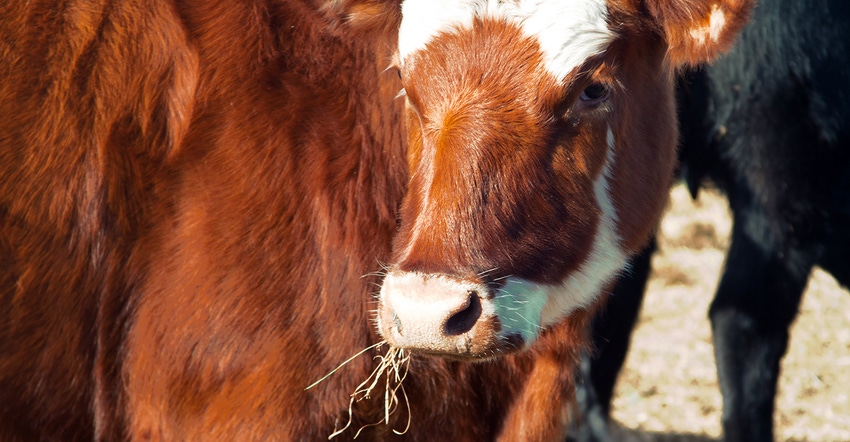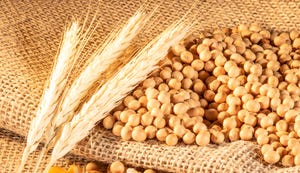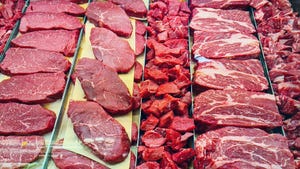August 7, 2018

Be cautious when turning livestock into pastures with certain warm-season grasses, as toxic nitrate and prussic acid can accumulate in drought situations.
“Any plant with the ability to grow quickly can develop buildup of nitrate and prussic acid, but some forages present a bigger threat than others,” says Jill Scheidt, an agronomy specialist with University of Missouri Extension.
The sorghum family — including sorghum-sudan hybrids, forage sorghum, sudangrass and johnsongrass; and corn — can develop the most buildup of nitrates and prussic acid.
“When there’s a drought, warm-season annuals quit growing but still take up nitrogen from the soil, and accumulate nitrates and prussic acid,” says Craig Roberts, the state forage specialist with MU Extension. “Once the drought ends, those plants start to grow again and look green and lush, but they’ll be full of toxins.”
Know nitrate levels
According to Scheidt, nitrates tend to accumulate in the lower portion of the stem of warm-season grasses such as johnsongrass, sorghum and sudangrass, as well as and corn. Other small grains, millet, soybean, oats, alfalfa, bermudagrass and tall fescue have the potential to develop harmful nitrate levels in their tissue.
“When livestock eat tainted forages, nitrates convert to nitrites, which absorb into the bloodstream and stop the blood’s ability to carry oxygen. Nitrate levels tend to be higher in stems, stalks and young leaves,” Scheidt says.
A simple nitrate presence test can be performed at a county University of Missouri Extension office. Cut the lower 8 to 12 inches of several randomly selected samples. Make sure the samples are fresh; a false nitrate reading can occur if the sample begins to dry out.
“If the samples test positive for nitrate presence, send samples to a lab for a qualitative analysis,” says Scheidt.
Graze safely
A sufficient rain can decrease nitrate levels. However, Scheidt says not to turn livestock in immediately, as nitrates temporarily spike following a rain; wait for three to five days of active growth to allow nitrate levels to decrease.
Dry baling preserves the nitrate level. If forage must be baled, leave 10 to 12 inches of stubble to avoid baling the most toxic part of the plant. Ensiled forages can reduce nitrate levels 20% to 50%.
Use caution when entering silo pits, as gases from forages with high levels of nitrate are toxic. If nitrate levels are higher than 1.5% concentration, do not use for livestock feed or bedding.
Problems with prussic acid
Prussic acid accumulates more in leaves than stems. Plants that accumulate prussic acid include millets, sudan and sudan hybrids, sorghum, johnsongrass and cherry trees. Millets do not tend to accumulate high levels of prussic acid.
“Prussic acid can develop in new growth after a prolonged drought or when plants are injured due to frost, hail and herbicide applications,” says Scheidt.
Chewing cud creates prussic acid when molecules containing sugar and cyanide in the leaf react with a plant enzyme, freeing up highly poisonous cyanide.
Samples need to be sent to a lab for prussic acid analysis.
When to graze
Wait two weeks or for 2 feet of growth before allowing livestock to graze. Prussic acid will break down and eliminate itself as a problem in harvested forages.
“Dry baling or ensiling forages is an effective way to reduce prussic acid. If dry baling, sample forage before feeding until prussic acid is no longer detected,” says Scheidt.
Source: University of Missouri Extension
You May Also Like




